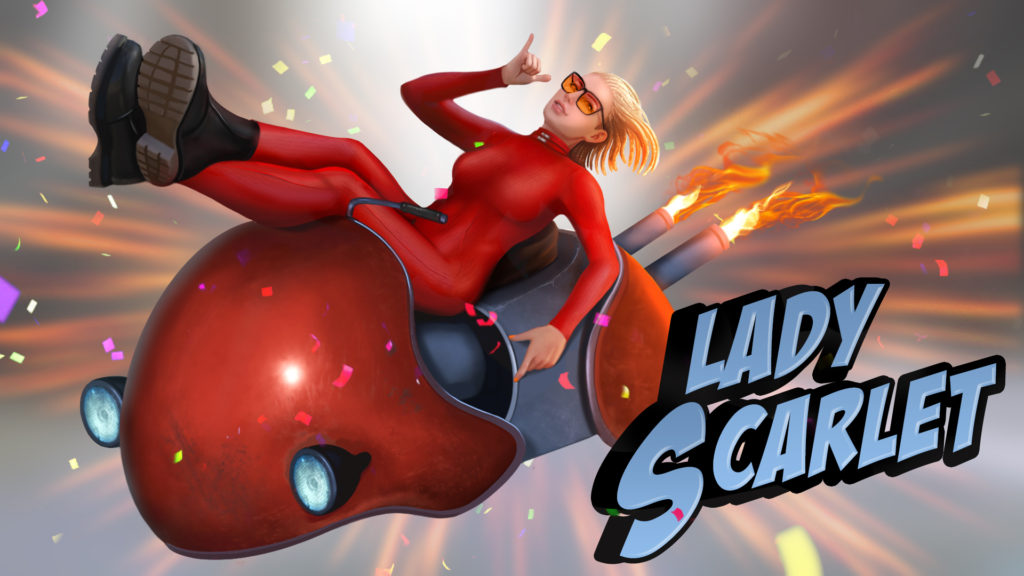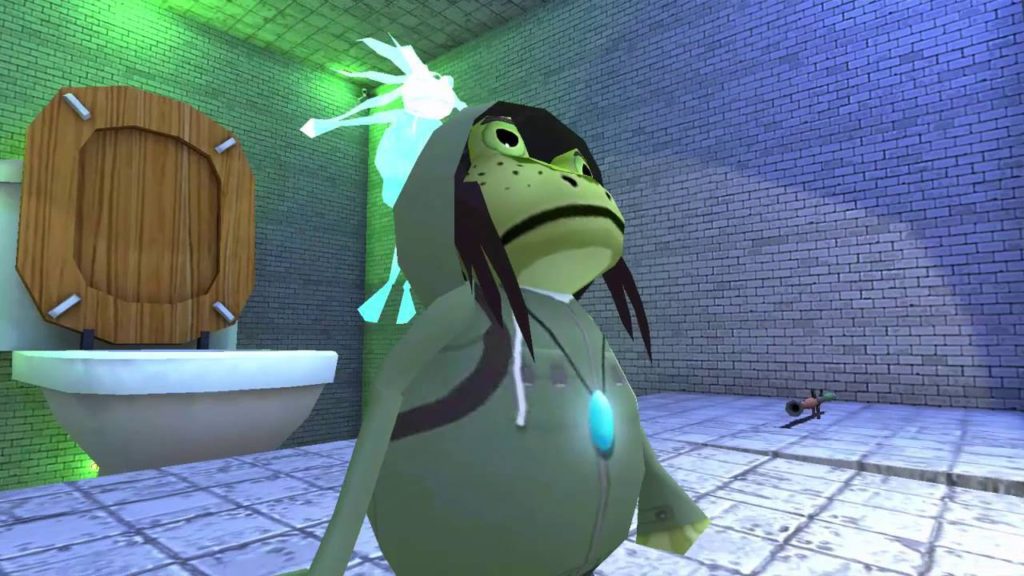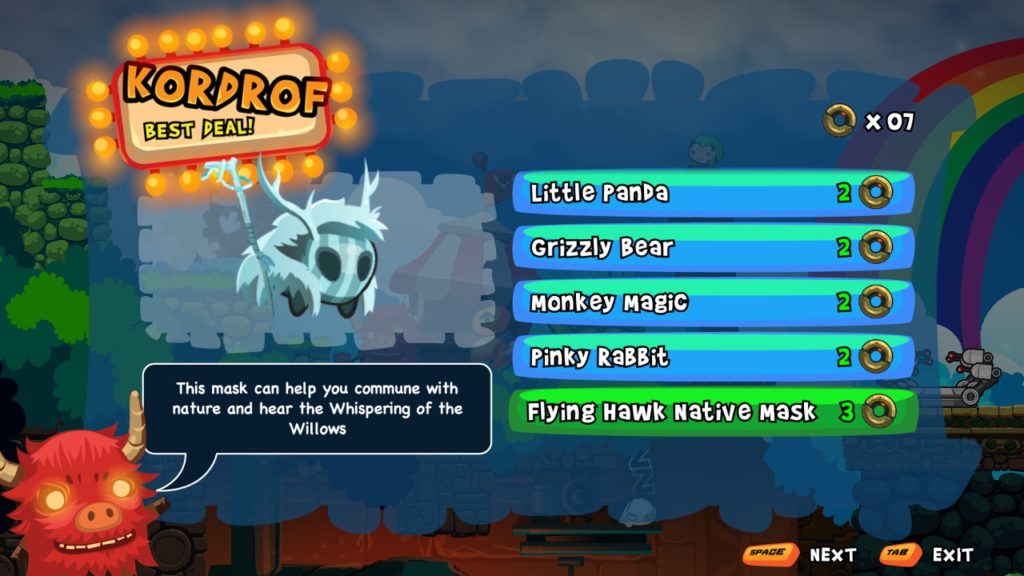In a world where getting the word out about indie games gets harder and harder, we as developers and publishers need to find new opportunities and avenues to rise above the chatter and make a place for ourselves and our games. There are dozens of ways to do this – Victoria Tran of Kitfox fame published a great article on marketing she calls “scrappy,” for instance, but today let’s focus on the power of a crossover. When we break it down, any successful game crossover has three components: The Opportunity, where you and another studio can share content; The Collaboration, where that promise of The Opportunity is realized; The Legacy, where the crossover pays dividends over time.

Lady Scarlet’s splash art in fighting game, Go All Out
The Opportunity
The first step of any crossover is to highlight the opportunity for it. Working with another studio to bring a piece of your game into theirs, or vice versa, requires some coordination to get just right.
You’ll also want to think about the other game and what they might be looking for or have available. For some games, this process is fairly easy. When Lady Scarlet from Desert Child debuted in Go All Out recently, that crossover was very straightforward. As a fighting game, Go All Out plans to feature new characters all the time – from Zorro to Teslakid – so they’re always going to be looking to add new characters from other popular indie games. Other games might require a little more thought and planning to create the opportunity that you’re looking for. Adding a crossover to your story-driven adventure game is probably going to be more difficult, but you might include a little nod or easter egg. In Whispering Willows, we feature an achievement surrounding the Amazing Frog when we crossed over with that game. As an achievement, it’s out of the way and far enough from the main narrative that it doesn’t interrupt the flow or pacing of the story.
Be proactive when it comes to crossovers. If you see a game that looks good or intriguing, feel free to reach out to the developers and ask if there’s something that the two of you can set up. Come equipped with a few ideas on what you might like to see from them and what you might be willing to offer in the title you’re developing. When games are still in development it’s much easier to make changes to them and going live with a crossover creates a strong marketing push towards their game because you’re now included in their launch marketing. Likewise, when your game goes live, you’ll have friends who are driving traffic to you.
At the end of the day, however, indie studios are often going to be interested in and looking for ways to help one another out, so with the right communication and perseverance, you and another team will get what you need to collaborate.

Elena skin in Amazing Frog
The Collaboration
Alright, let’s assume you and another studio have found a good fit. What does step two in the crossover process look like? The key, here, is to understand what it is that you can offer specifically and what it is you’d like to see from them in return. In general, you’ll have three strong assets that you can share across titles:
- Art. If your game has lush landscapes or iconic character design, you might want to find spaces where that art can shine as part of a skin or level in someone else’s title.
- Writing. Does your game have turns of phrase, slogans, or mottos that others will instantly recognize? Maybe sliding that in through dialogue or an achievement would be your best bet.
- Mechanics. Bringing your game’s unique set of mechanics or interactions to another title can integrate you into another title more thoroughly.
These three will break down nicely depending on the game that you’re crossing over with. If you’re looking to cross into a mechanics-driven action game, it probably makes sense to borrow mechanics from the other title. Lady Scarlet in Go All Out brings her hover bike with her, including special attacks that use its boost or gun from Desert Child. In other titles focused more on the art style, it might make more sense to cross over that art. Elena’s iconic jacket and medallion make an appearance in Amazing Frog? because her character design is so recognizable. Words or phrases that are highly recognizable are probably the most straightforward crossovers you’ll see. A small easter egg for folks who are keeping an eye out, for instance. On top of this, writing is easy to thread into parts of the game that are relatively out of the way, such as achievement text.
When it comes to interacting with other studios, the process should chiefly be about clear communication and integrity. If you’re lending out a character to another game, be upfront with what you think make up that character’s core. What are the defining characteristics that you’d like to see transferred over? What kinds of references can you provide for your collaborators that will help them get it just right? And when you’re thinking about returning the favor, you should be asking the same sorts of questions of them. It’s also typically good to give your collaborator a sneak peak at the work you’ve done with their character, just in case they have any feedback that you might want to incorporate into the project.

Flying Hawk Mask in So Many Me
The Legacy
So, you’ve gone live with your crossover. Congratulations! The obvious next step is to promote the game and turn the crossover into a real marketing effort. Perhaps you want to send out a joint press release announcing the crossover, or maybe you just want to feature your collaborator’s game on your weekly streams. A different approach will be good for different situations and you should give the crossover as much attention as necessary in its immediate aftermath.
Don’t let the crossover put an end to the collaboration, though! Whispering Willows has crossed over into a number of different titles, some which are no longer being actively developed or ported, while others are still going strong to this day. But the most important effect of a crossover for any developer should be the relationship that you built between your studio and another. Whether you meet up for coffee at GDC, or just give shoutouts to their newest projects on Twitter, make it a priority to keep in touch and on the ball with everything that you’re working on! You’ll never find better advocates for indie titles than other indie developers and those kinds of relationships are going to carry not just your future titles, but the entire industry forward in immensely positive ways!
If you’re interested in crossing over with any of the Akupara Games titles, please feel free to reach out here. We’re more than happy to have conversations with any developer that wants to collaborate with us. If you haven’t already, make sure to join us on Twitter, Facebook, Instagram and Discord!
